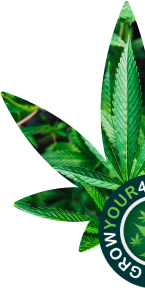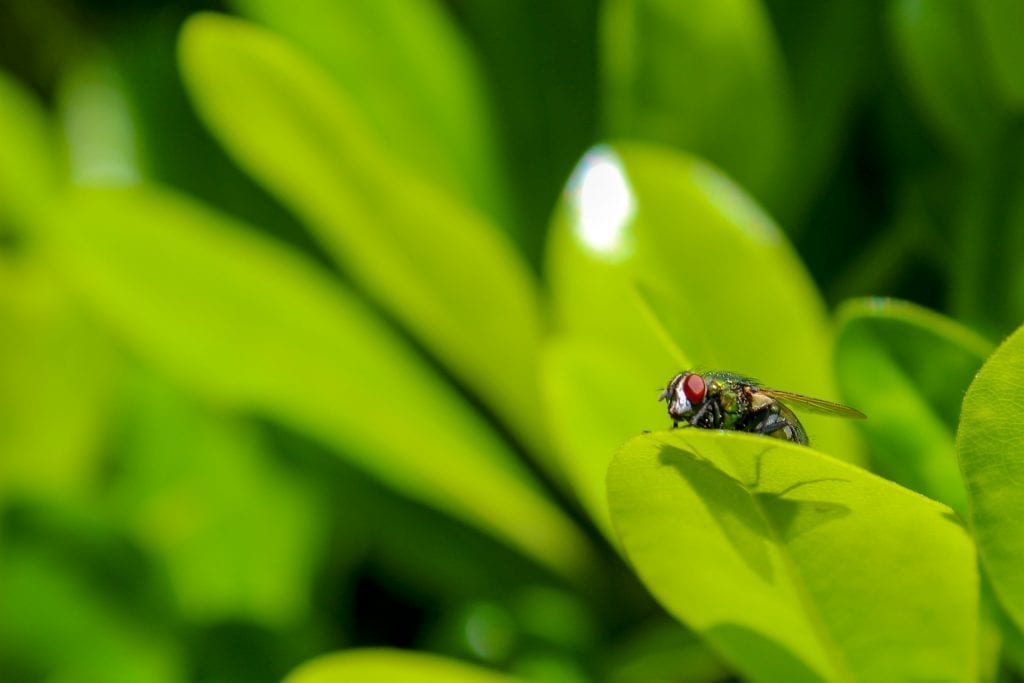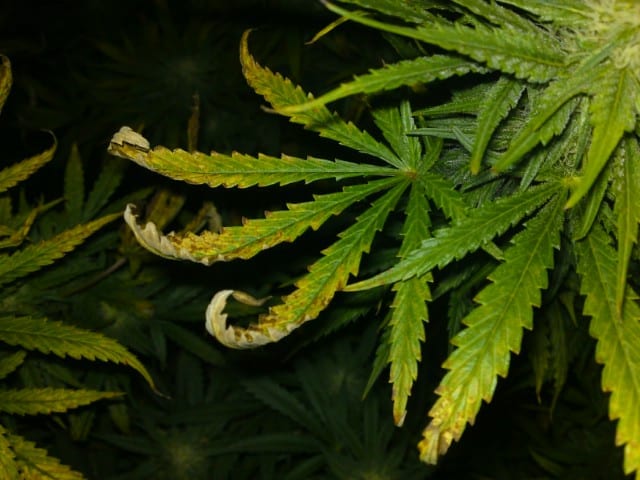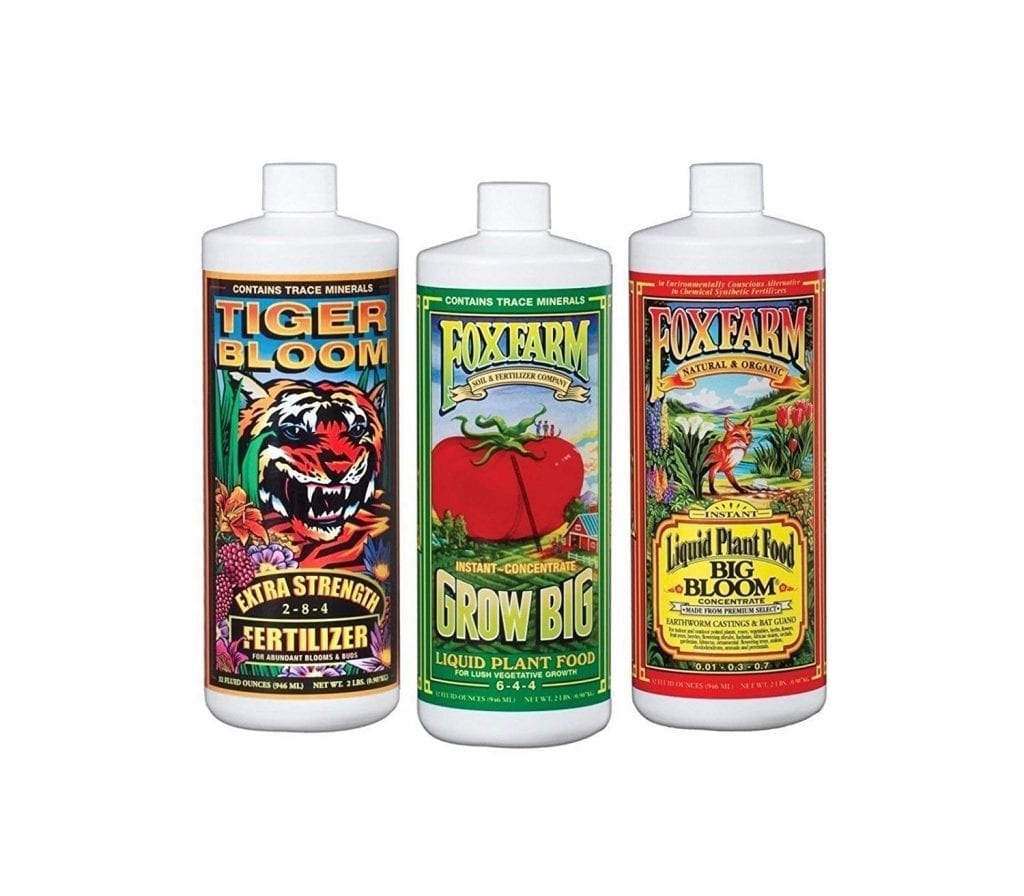We love our plants, don’t we? We go all out to protect them. Water them, put them in the sun, change the soil, and whatnot.
But still, there are times when things don’t function in our favor, and plants just wouldn’t grow. Only then we consider ants as the hurdle. But they don’t normally attack plants. Above all, the question arises: how to get rid of ants in plants?
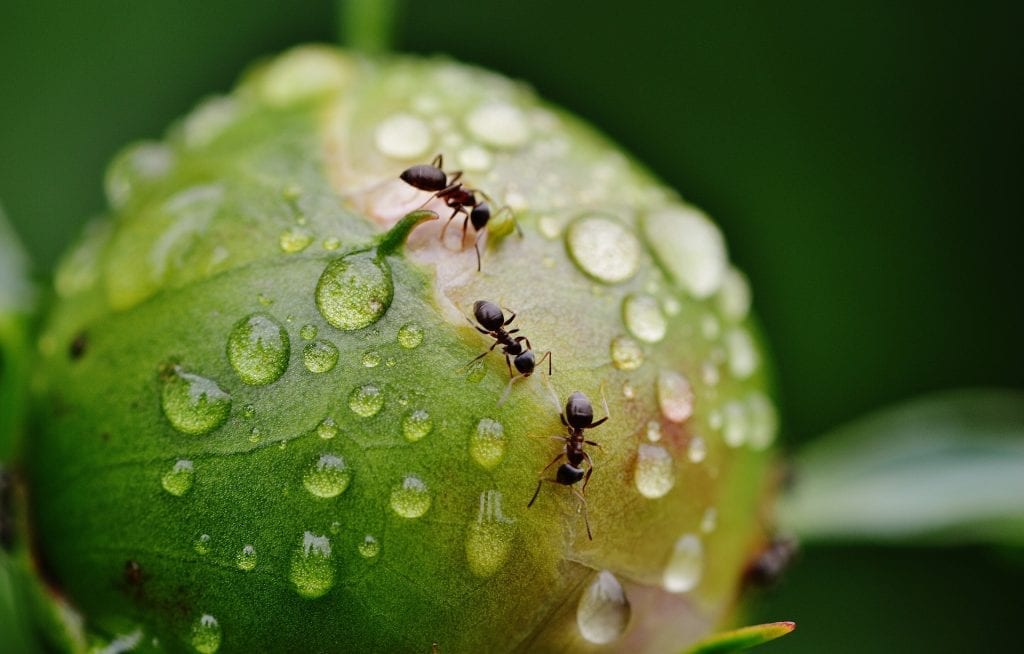
Sounds strange!
So, before you jump to the How-to part, we recommend you should know the background; Why ants head to your plants in the first place.
Are you having trouble controlling your plants and do you think you have a pest or plague? Read our guide on controlling cannabis pests.
The Background
Ants are after tiny insects, like scales, aphids or mealybugs that affect the growth of the plant. So, the question is, how do ants affect your plants if they’re not supposed to attack them? Take aphids, for example.
Aphids are tiny insects that feed on the juice of your marijuana plant. By taking out the sugar content, they cause its leaves to dry and turn them yellow. Moreover, they increase at a rapid pace.
Ants are smart creatures. They don’t kill these insects. Instead, they protect these aphids so that they can grow quickly.
That’s because ants utilize them to take more juice out of your marijuana plant.
Takeaway
Do you get it? Your plant gets affected by those tiny insects, not ants. In fact, the presence of ants in your plant is a sign that it’s under attack and needs instant precautionary measures.
By eliminating those pests, not only can you save your plants from the ants but also ensure smooth growth.
Getting Rid of Ants in Plants
How should we get rid of the ants then? For it is never an aesthetic to see ants cruising in our favorite plants, or is it?
Read on to find out if you should suspect these benign creatures damaging your plants.
Look for the Signs
Following are the signs that show there are pests in your garden:
If you catch sight of ants in your plant pot, it is quite likely that there are aphids, and other pests present in the pot. We have discussed above; ants are naturally attracted to honey-dew left by these creatures. However, if you may ask, ants are not as harmful to the plants as these creatures are.
A Trail of Ants
Don’t take it lightly if you find an ant or two wandering around your plant. Things may be more serious than you expect.
Remember, ants don’t often roam alone. So, when you see a lonely ant roaming around the pot, it is obvious that there’s a trail somewhere near devouring in the soil.
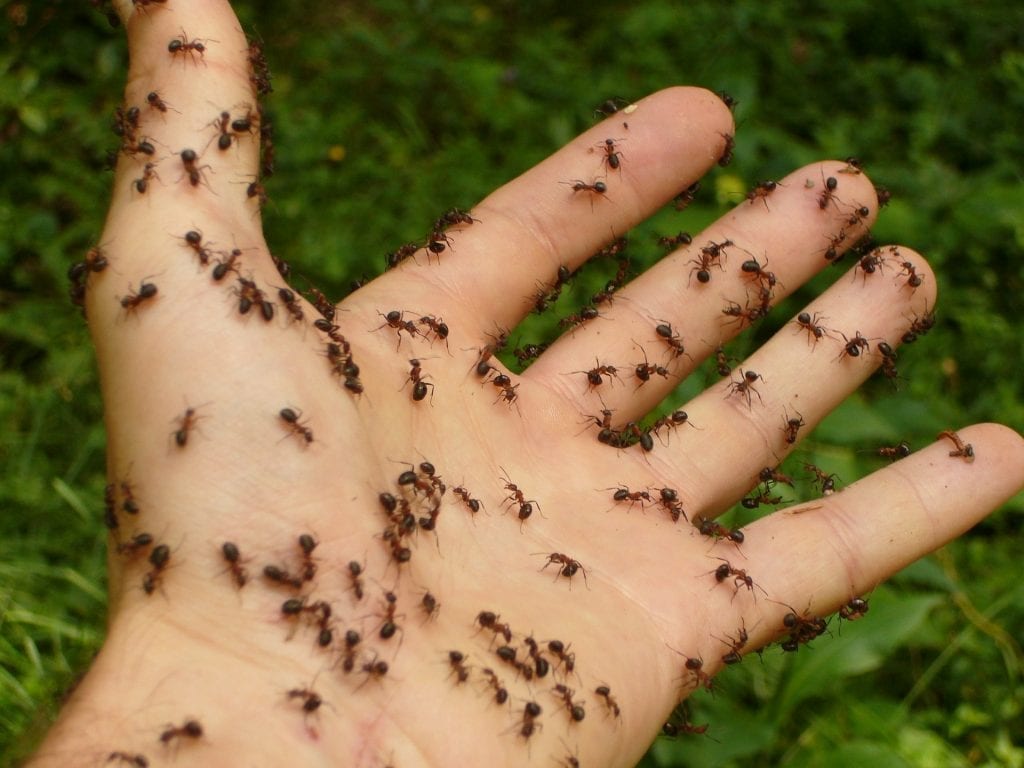
Before they come in numbers, make sure you’re prepared with all the preventive measures. Figure out the ways to get rid of them before they harm your plants.
Different Methods: How to Get Rid of Ants in Plants?
Though cinnamon is the most common remedy to get rid of ants in the pot, there are many other DIY solutions available at your disposal. You can use these methods to kill the ants from your plants. Find the details in the next heading.
Flood the Pot in Insecticidal Solution
In case the pot is infected by fleas and ants, a flood of water with the right proportion of insecticide would help eradicate these creatures thoroughly. However, it is important to follow the procedure below as accurately as possible.
Preparation of the Solution:
The following steps should be followed to prepare the solution.
- Take a clean bucket or a pot.
- Add a gallon of water in the pot. However, depending on the solution, you can always increase or decrease the quantity.
- Take a spoon full of detergent/dishwashing soap or insecticidal soap and stir it into the solution so that all the contents are nicely integrated.
Split the Solution into Two and Drain It In the Plant:
After preparing the solution, split it into two separate containers and put one of the containers to the side.
Make sure you choose the appropriate size of the container that can easily accommodate the pot. This way, it will be easier for you to flood the pot without spills or any other mess.
Now add half of the insecticide mixture in the pot. If you observe that the ants are escaping from the pot, spray the solution directly on them to eradicate them entirely.
Now for the remaining solution, pour it through the infested soil.
Put the Plant In the Shade and Mix the Solution Gently:
For this step, it’s important to put the plant in the shade. With a gentle hand, make the solution seep in through the soil. Since detergents and dishwashing soaps are of mild nature, they wouldn’t damage the soil or the plant.
After mixing the solution into the soil, let it sit for an hour, which will be sufficient enough to kill the pests and ants still remaining in the pot.
Submerge the Entire Pot in the Insecticidal Solution:
Has the solution been sitting in the soil for an hour or more? If yes, then pick the pot and submerge it into the container of insecticidal solution.
Keep it in for the next 15 minutes. Spray the solution again on the ants escaping by. Finish the process by removing the pot from the container and put it to the side.
The Last Step: Rinsing With Clean Water
Lastly, use a hose to drench the pot in the cold water. This would remove all the insecticidal solution from within and out of the plant. Let the plant completely dry before letting the sunlight touch the plant.
Ants and Cinnamon
Do you know? Cinnamon eliminates ants like no other substance. It’s a deadly combination as cinnamon tends to suffocate those little creatures and get rid of them very quickly.
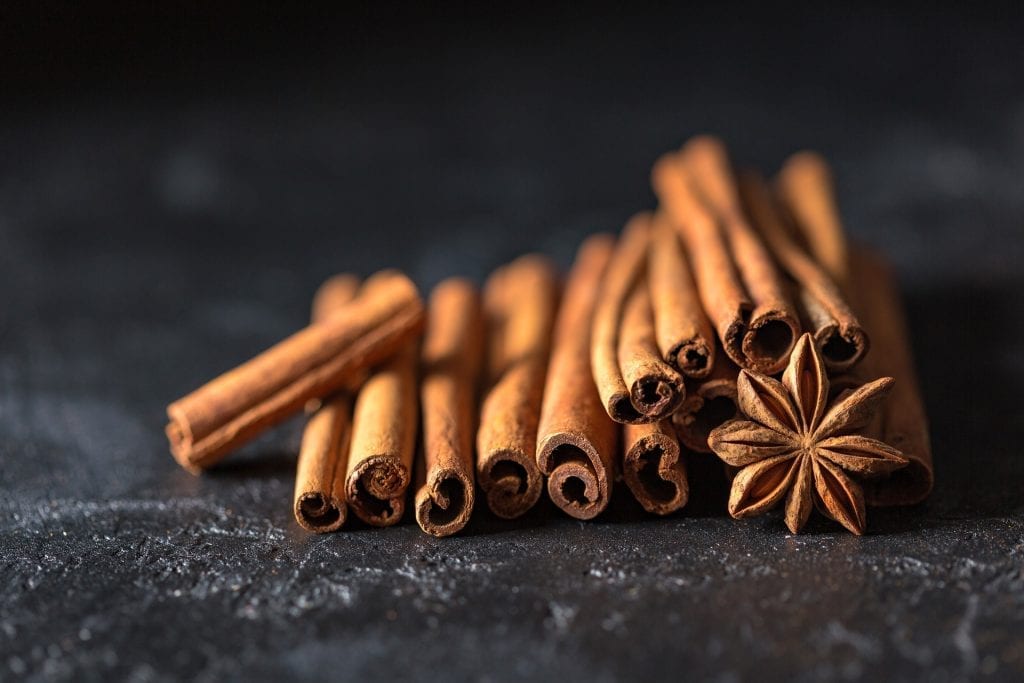
That means, using cinnamon is a simple process with not too much work to do.
Sounds good? Here’s a quick process.
All you need is grounded cinnamon. Either take grounded cinnamon or ground it yourself. Next, sprinkle it on to the trails of ants walking by. You’ll notice a quick response.
Cinnamon would take care of any ants inside the pot. Whether red ants or pests, the cinnamon would suffocate and kill them in entirety.
Insecticides and Bait
Ants are attracted to baits. The baits for ants contain gently working insecticides disguised in sugar and proteins. It would kill the ant colony as the working ants would take the poisonous food back to their colony where they would swallow it to death.
However, for the bait to work perfectly consider the following points:
Bait in Stick
Purchase the bait in a stick and directly infuse it into the infected plant. It may contain anything that may cause allergy, so take all the necessary precautions while infusing it.
Considerations before Using the Bait
Make sure you are using baits specifically made for ants. While baits are one of the ideal ways to kill the ants in the plants or even in the garden, it might be unsafe to use these ant-eliminating options when you have children or pets in the house.
Ingredients that Optimize Bait’s Performance
These are some helpful ingredients ant baits should feature:
- Hydramethylnon – an organic compound that’s specifically used to prevent pests and harmful insects
- Fipronil – a common insecticide used to kill ants, cockroaches, termites, rootworms, and other insects
- Boric acid – it is an insect repellant that is low-toxic compared to the above two alternatives
Fast Action vs. Slow Action Baits
Make sure the bait used is not too fast in action. For it wouldn’t help as much as the slow-acting ones would. Since the labor ants would die even before reaching the colony, which is so not our goal here.
Hence, avoid baits that contain cyfluthrin or permethrin.
Cover the Topsoil with Diatomaceous Earth (DE)
The diatomaceous Earth is another organic and mineral-based insecticide. For a safer application, use an applicator bulb.
Spread it on the base and the soil of the entire infested pot. However, for effective implementation, the soil should be dry.
DE is fast in killing the ants. Hence, it would within less than 30 minutes, kill all the ants in the pot. Also, considering DE has hazardous contents, during the application, make sure you’re wearing a mask or anything in case you inhale it.
Conclusion
Considering the facts, ants are quite not the hurdle in the growth of plants, but the sight of an ant in your plants confirms the presence of other hazardous pests. Hence, it’s crucial to eradicate the ants before they harm them. At least, now you know how to get rid of ants in plants.
Table of contents

